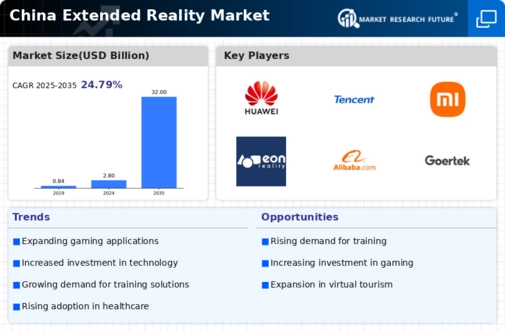The competitive landscape of the China Extended Reality Market showcases a dynamic and rapidly evolving environment driven by advancements in technology and significant investment from various players. This sector is characterized by the integration of virtual reality, augmented reality, and mixed reality technologies into a wide array of applications, from gaming and entertainment to education and healthcare. Companies are leveraging their technological expertise to develop immersive experiences, and there is a constant push to enhance hardware capabilities and content availability.
The market is also impacted by strong government support aimed at positioning China as a leader in the extended reality domain, which further intensifies competition among domestic and international participants.
Huawei has established a substantial presence in the China Extended Reality Market, leveraging its robust telecommunications infrastructure and wide-ranging technological platforms. Known for its strong innovation capabilities, Huawei has invested heavily in developing XR devices and applications, positioning itself as a pivotal player at the intersection of telecommunications and immersive technologies. This strategic focus is bolstered by Huawei's extensive research and development resources, allowing it to create cutting-edge products that cater to both consumer and enterprise segments.
The company benefits from its strong brand recognition and reputation for high-quality hardware, which enhances its competitive edge as it continues to expand its suite of XR offerings tailored specifically for the Chinese market.
Tencent, a major player in the China Extended Reality Market, distinguishes itself through its vast ecosystem that encompasses gaming, social media, and content platforms. The company's key offerings in this segment include immersive gaming experiences and interactive applications that integrate augmented reality solutions. Tencent's strategic investments in XR startups and technology companies have solidified its position as a leader in the space. The company's commitment to fostering innovation is evident through its active involvement in collaborations and partnerships that drive technological advancements.
With a strong focus on user engagement and a rich portfolio of intellectual properties, Tencent is well-positioned to capitalize on the growing demand for extended reality applications in China. Notably, Tencent has pursued mergers and acquisitions with firms that enhance its capabilities in XR, further solidifying its presence in the Chinese market.












